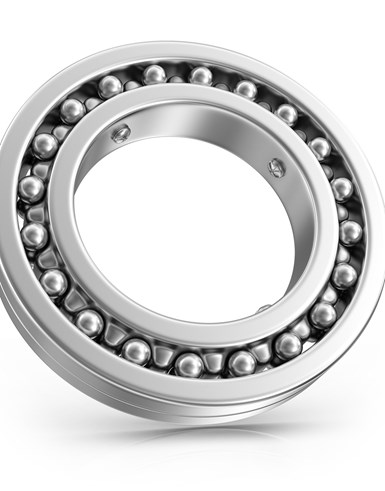Causes Are Complex: The Case for Choosing the Right Failures to Analyze
The nuance and complexity of failure in bearings is enough to illustrate the difficulty of failure analysis in general, and how much consideration this analysis deserves.
Share


I was not familiar with engineering author K.K. Murty until I came upon his latest book, “Why Industrial Bearings Fail.” The book drew me for two reasons:

Photo credit: Getty Images
1. Bearings. Machine tools need them. Most metalcutting machines require fast, reliable spinning of a tool or workpiece, if not both.
2. Failure. It is compelling to learn why anything fails: bearings, machines, systems, companies, relationships. For any of these things, the break has a way of coming by surprise.
Murty’s book offers plenty of insight about both. Indeed, he begins the book with an apparent organizational failure, describing the scene of a failed bearing this way:
A few people are working feverishly to put the equipment back in service. Enter a powerful person, say a manager or senior mechanic, who pronounces the verdict on the cause of failure without even a cursory inspection of the failed bearing. The witch hunt centers on a scapegoat rather than engaging in a studied analysis of why bearings fail. The production boss jets in and asks, “When can we restart the plant?” To save production time, the bearings are replaced quickly without a lot of thought. Unless some interest and insight are shown in installation, operation and maintenance of bearings, they are bound to fail again and again.
The “powerful person” in this story does not come off looking good. He made the wrong choice, it would seem.
But did he? I am not so sure we know enough to say. The “verdict” was a quick guess, but possibly an educated guess. The truth would be better, but can only come more slowly.
The book captures this in a much later passage on the difficulty of diagnosing the cause of a bearing failure in a milling machine that was used for rough cutting of aluminum. Weren’t the forces of machining the cause of failure? Maybe, maybe not. What follows is a digression into bearing wear, after which I will come right back to my larger point. Keep bearing with me (see what I did there?).
On the wear we can see on bearings such as the one on the milling machine, Murty notes that the pattern of dents that might be visible all around the inner surface of the bearing race might be an indication of the balls or rollers impacting the surface because of the vibration of heavy machining, but not necessarily. Bearings are vulnerable in a different way when they are sitting still, he says. In this state, no lubricant film separates the rolling element and race. Vibration of the machine resulting from some other source, such as heavy equipment running nearby, might wear out the bearing while the machine is at rest. And electrical current flowing through the machine could have this same effect — the rolling element might act upon the race like an EDM electrode. (Murty detects this cause by scent, because burnt grease is a telltale sign. I love that.) In short, all of these different failure modes produce a similar pattern of evidence on the race.
What all this means is that even if the correct evidence is correctly seen, the underlying cause of the failure still might not be apparent. Identifying the “why” of a failure can be very hard.
For machine shops, anticipating the “when” can be of more immediate value. For example, cutting tools are tested to determine the life that can be counted on before a tool change is required. Regarding bearings, one shop measures the heat of its spindle tapers to learn when bearings (or other parts of the spindle) are nearing failure.
In each of these cases, knowing the “why” would be even better than the “when.” Identifying the driving factor leading to tool failure (what if it is mostly the result of just one feature in the machined part?) could inform the change that increases tool life substantially. Similarly, identifying the driving factor leading to bearing failure (could it be the machine running nearby?) could lead to reduced maintenance expense. But again, identifying the “why” is hard, meaning someone has to determine whether the analysis is worth the potential return.
The figure in the story above arguably did that. Bandwidth is limited, causality is complex and production is what is paramount. The “manager or senior mechanic” potentially made the wise choice to make the fix and keep moving. The choice is foolish if it is part of a pattern of never asking why, but not if there is different failure nearby that promises to unlock far more value if its nature can be known.
The causes of bearing failure can fill an entire book, clearly. The mechanisms of cutting tool wear can as well. Human and organizational failures fill many (particularly history books). What all of this implies is that root cause analysis, while necessary and powerful, can’t be applied to everything, so it has to be used to its best effect. Given that there is so much “why” to uncover, the prudent course is to let go of the expectation that it should all be known. The prudent course, that is, accepts some guesses. For failure analysis, a potential failure lies in not choosing the best failures to analyze.























